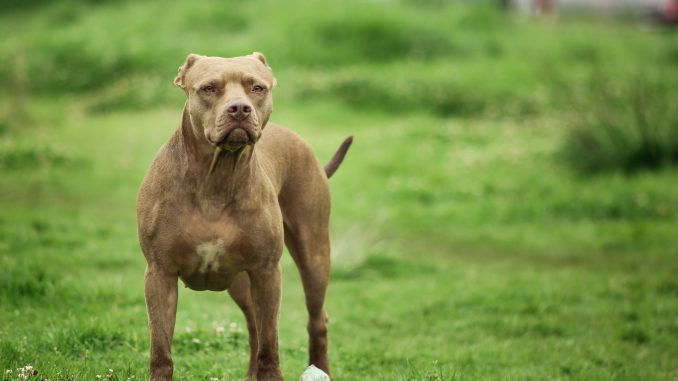
Ever found yourself dreaming of a Pit Bull that’s not just any old pet but a real head-turner? Well, you’re in the right spot, dog lovers! We’re about to take a deep dive into the world of Brindle Pitbulls – I’m talking about the blue Brindle Pitbull, the classic Brindle Pit, and the Brindle Pitbull Terrier.
Imagine a dog that’s as strong as a gym buff but with the soul of the softest teddy bear. That’s your Brindle Pit bull for you. These furballs are unmatched in their loyalty to their humans, and their buff exterior hides a genuinely warm heart.
Now, you might be scratching your head, wondering, “A Brindle Pitbull? Sounds fancy, is it a rare breed?” Nope, it’s not a separate breed but a unique coat pattern on the good ol’ American Pitbull Terrier. It’s those eye-catching stripes that make them pop in any crowd.
Having had two Labradors myself, I’ve got a bit of experience in the dog companion department. But let me tell you, the first time I laid eyes on a Brindle Pit bull, I was taken in. Their allure isn’t just skin deep; these dogs pack brains, friendliness, and a loyalty level that’s off the charts, making them a fantastic pick for any home.
So, if you’re curious about what makes these tiger-striped dogs tick and how they can become your next best friend, buckle up and keep reading! We’re about to demystify the world of Brindle Pit bulls in this comprehensive guide for new owners.
TABLE OF CONTENTS
- Brindle Pitbull Quick Summary
- Brindle Pitbull Origin
- Brindle Pitbull History
- Brindle Pitbull Physical Characteristics
- Brindle Pit Bull Temperament
- How to Care for a Brindle Pit Bull
- Brindle Pitbull Puppy
- Training a Brindle Pitbull
- Brindle Pitbull Common Health Issues
- FAQs About Brindle Pitbull
- Embrace the Loyalty and Love of Brindle Pitbulls
Brindle Pitbull Quick Summary
Brindle Pitbull Origin
The term “Brindle Pitbull” does not refer to a separate breed but rather highlights a captivating color and pattern variation found within various Pitbull breeds. This distinctive coat pattern adds a unique touch to these already remarkable dogs. While not as widely recognized as other coat variations, Brindle Pitbulls encompass a range of Pitbull breeds that exhibit this striking pattern.
Among the Pitbulls that can display the Brindle coat are:
- Staffordshire Bull Terrier: Originating in England, the Staffordshire Bull Terrier, often referred to as the “Staffie,” has a rich history dating back to the early 19th century. Initially bred for bull-baiting, these dogs were later used for ratting and as loyal family companions. They have a strong, muscular build and a distinct Brindle coat that adds to their striking appearance.
- American Pit Bull Terrier: The American Pit Bull Terrier has roots in the United States and shares ancestry with the Staffordshire Bull Terrier. These dogs were bred for various purposes, including hunting, farming, and as family protectors. Over time, they developed their distinct traits and the recognizable Brindle coat pattern. Known for their loyalty and agility, American Pit Bull Terriers are among the most iconic members of the Pitbull family.
- Several other Pitbull breeds: The term “Pitbull” encompasses a variety of breeds, including the American Staffordshire Terrier, American Bulldog, and Bull Terrier, among others. Many of these breeds share common ancestry and were initially bred for tasks such as hunting, herding, and guarding. The Brindle coat variation can be found in some individuals within these breeds, contributing to the diversity and charm of the Pitbull family.
Although they may not have earned the American Kennel Club‘s (AKC) official recognition as a distinct breed, several individual pitbull breeds they comprise are acknowledged by the AKC.
Brindle Pitbull History
Let’s rewind the tapestry of history to the 1800s when the first Brindle Pitbulls made their entrance. These dogs emerged as the offspring of a union between the Old English Bulldog and a Terrier, merging the tenacity and loyalty of the Bulldog with the Terrier’s wit and cleverness. This unique blend of qualities led them to become indispensable in their roles.
As time passed, these dogs found their way to American shores, where they were initially bred for the grim world of dog fighting. However, a peculiar twist in their nature started to emerge. Despite their fighting heritage, Pit Bulls exhibited an astonishing affection for people.
You might be puzzled, wondering how dogs bred for such a brutal sport could harbor such compassion. The answer lies in their selective breeding. Dogs that displayed aggression towards handlers were deemed useless in the fighting arena. Consequently, only dogs with an inherent love for humans were chosen for breeding, ingraining this affectionate disposition into the breed’s DNA.
The distinctive brindle coloration, resembling the stripes of a tiger, began to surface in the early 19th century. It’s believed that this striking pattern originated from a cross between a fawn Pit Bull and a brown dog, resulting in the captivating tiger-like stripes we now associate with Brindle Pit bulls.
Brindle Pitbull Physical Characteristics
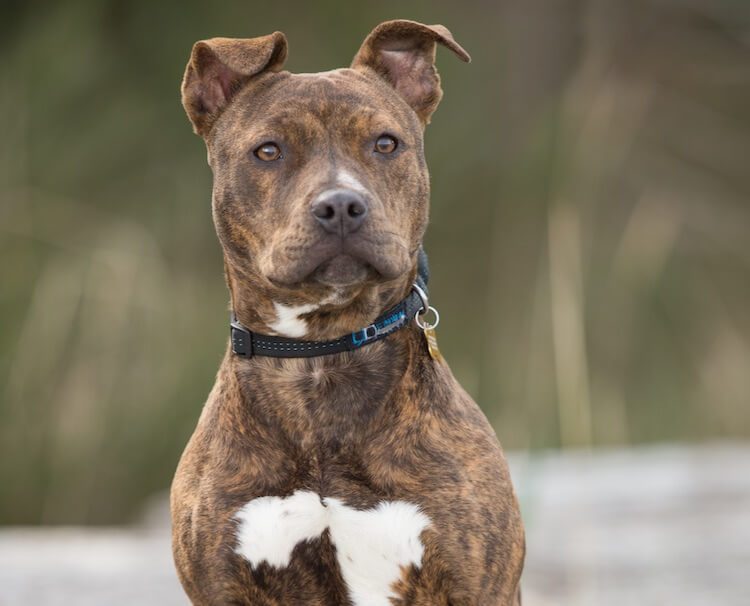
Just like any other Pitbull, Brindle Pitbulls are a striking embodiment of strength and elegance. These dogs harmoniously blend muscular power with graceful agility, and what truly sets them apart is their captivating brindle coat pattern. Reminiscent of a tiger’s stripes, this unique marking adds a touch of natural artistry to their already charismatic presence. As we delve deeper into their physical characteristics, you’ll discover how Brindle Pitbulls truly stand out in the world of canines
Appearance
Brindle Pit Bulls may share the same breed traits as their fellow Pit Bulls, but what sets them apart is their captivating brindle fur pattern. These dogs are not a separate breed but rather exhibit a unique coat variation that adds a touch of individuality to their appearance.
The Brindle Pattern: A Recessive Gem
The defining feature of a Brindle Pit bull is, without a doubt, its brindle coat pattern. This striking pattern consists of darker stripes, often black, etched onto a lighter background, typically brown. Alternatively, some Brindle Pit bulls display a reverse coloration, with lighter stripes adorning a darker background. While the genes responsible for this pattern are recessive, it’s not uncommon to encounter dogs showcasing these mesmerizing tiger-like stripes.
The Brindle Coat: Straight and Sleek
Brindle Pit Bulls sport a coat that’s defined by its straight, sparse, and slightly stiff texture. While not excessively long, their fur is notably short, contributing to their low-maintenance grooming requirements.
In summary, the Brindle Pit bull’s allure lies in its distinctive brindle coat pattern, a recessive gem that distinguishes them within the American Pit Bull Terrier breed. Despite sharing many breed standards, their striking appearance sets them apart and adds to the charm of these captivating
Height and Weight
The Pit Bull typically stands between 17 to 21 inches (43 to 53 cm) at the shoulder. These dogs exude an impressive presence with a well-balanced build that reflects their muscular and athletic nature.
Their weight varies depending on gender and specific breed type within the Pit Bull category. On average, adult pities weigh between 30 to 60 pounds (14 to 27 kg). Males tend to be slightly heavier than females, but individual variations can occur.
Size
These dogs fall within the medium to large dog category. They boast a sturdy, well-proportioned body with strong limbs that exemplify their physical prowess. Their size makes them adaptable to various living environments, from apartments to spacious homes, as long as they receive the exercise and attention they require.
Coat and Color
One of the defining features of Brindle Pitbulls is their striking coat pattern. The brindle coat showcases a mesmerizing blend of dark stripes overlaid on a lighter background. These stripes often resemble the tiger-stripe pattern that sets them apart from other Pit Bull variations.
The coat is short, sleek, and dense, providing a low-maintenance grooming experience for owners. Brindle Pitbull Terriers sport a glossy and polished appearance that highlights their muscular physique.
Brindle pits exhibit a range of color combinations within their brindle pattern. While black and brown stripes are among the most common, you’ll also find variations with shades of blue, red, and even fawn. Each Brindle Pit bull boasts a unique coat pattern, making them not only affectionate companions but also captivating works of canine art.
Brindle Pit bulls are not only defined by their physical prowess but also by their distinctive appearance. Their height, weight, size, and mesmerizing coat pattern make them stand out in the canine world, captivating the hearts of dog lovers everywhere.
Brindle Pit Bull Temperament
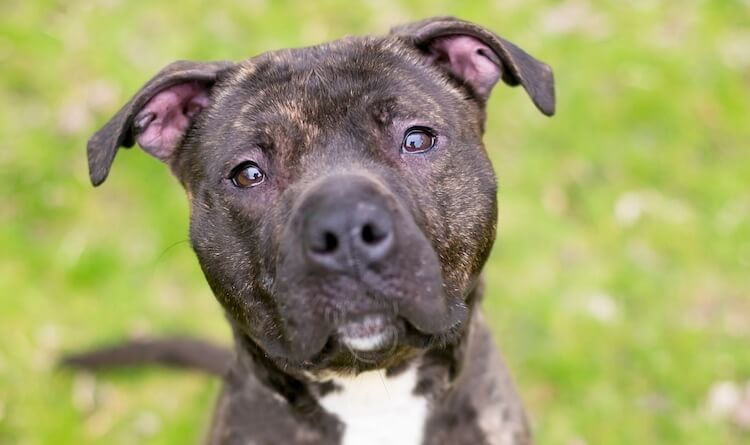
Don’t let their tough exterior fool you; Brindle Pit bulls are a bundle of love and loyalty waiting to steal your heart. These dogs thrive on human connection and, with the right socialization, make exceptional family pets. Their intelligence and quick wit make training a breeze.
Brindle Pit Bulls are renowned for their boundless zest for life – a trait that’s even celebrated in their breed standard. To them, every moment is an adventure, from fetching the mail to joining you at the local coffee shop. Their exuberance is infectious, and they’re known to infuse joy into even the most mundane tasks.
In terms of temperament, the brindle coloration doesn’t set them apart from their mono-colored cousins, the blue nose Pit Bull and the red nose Pit Bull. These dogs are incredibly affectionate and tend to form strong bonds with their families, making them great companions, especially for children. However, their robust physique means that all interactions with kids should be supervised to ensure safety for both parties.
While Brindle Pit bulls shine in one-on-one dog interactions, they may display less patience when faced with groups of dogs. Socialization from a young age is crucial to help them develop positive interactions with other canines. Additionally, it’s essential to closely monitor their body language during encounters with other dogs to ensure a harmonious experience.
One noteworthy trait of Pit Bulls is their tendency not to be excessive barkers. They’re more inclined to take action if they perceive a threat to themselves or their family. This protective nature underscores their loyalty and commitment to those they hold dear.
How to Care for a Brindle Pit Bull
While Brindle Pit bulls are cherished for their affectionate nature, their exuberance can sometimes lead to accidental incidents, particularly around smaller children. Consequently, it’s advisable to exercise caution and consider the dog’s temperament when introducing them to homes with young children.
Their robust build and lively disposition can mean they’re not always aware of their own strength, which may also make them less suitable for elderly individuals, particularly young males.
Feeding a Pit Bull – Diet Requirements
Brindle Pit Bulls are known for their robust constitutions, enabling them to thrive on a variety of dietary options. Whether you choose dry kibble, wet food, or a raw diet, their strong stomachs can accommodate it all. However, proper portioning and mindful selection are key to their well-being.
- Dry Kibble: If you opt to feed your Pitbull dry kibble, aim between 2 to 3 cups daily. The specific amount depends on your dog’s size and weight, so it’s essential to tailor the portion to their individual needs.
- Wet and Raw Diets: Brindle Pitbull Terriers also excel on wet and raw diets, which can be divided into two meals a day to sync with your own eating routine. Establishing a regular feeding schedule not only fosters discipline but also ensures smaller, manageable meal portions.
When selecting a food brand, it’s crucial to pick one that excludes ingredients like corn, soy, or wheat. Some dogs can be sensitive or allergic to these components, potentially leading to health issues, including bloat.
It’s worth noting that Brindle Pits may also exhibit allergies to certain meats or dairy products. Therefore, introducing new foods should be a gradual process, starting with minimal amounts to monitor their reactions and make adjustments accordingly.
In line with the recommendations of the Association of American Feed Control Officials, your Brindle Pit bull should consume a minimum of 18-22% protein. This protein intake is vital to sustain their muscular physique, ensuring they remain strong and healthy.
By thoughtfully curating their diet, you can ensure that your Brindle Pit bull remains energetic, muscular, and ready to embrace every adventure that comes their
If you are training with food, be sure to factor this into your dog’s daily calorie intake.
Exercising a Pit Bull
Pit bulls, by nature, are a breed designed for activity, and the Brindle Pit bull is no exception. These dogs are always up for an adventure and are at their happiest when outdoors.
A nature walk is a delightful activity that your pup will thoroughly enjoy. However, it’s crucial to exercise caution and be mindful of their physical limitations, especially during their growth phase. Overexerting them during maturity is best avoided.
Daily walks are a must for Brindle Pit bulls to channel their exuberance positively. This routine not only fulfills their need for physical exercise but also engages their sharp minds, ensuring they remain well-balanced and content.
Brindle pitbulls share many characteristics with their standard-colored counterparts, and it’s important to be mindful of their interactions with other dogs. In areas heavily populated with canine companions, they may perceive unfamiliar packs as potential threats.
If you choose to venture into bustling locales with your Brindle Pit bull, it’s advisable to keep them on a leash. This not only ensures their safety but also promotes responsible pet ownership, allowing both you and your pup to enjoy your outdoor escapades to the fullest.
Specific Grooming Requirements
Grooming your Brindle Pitbull is not only a practical aspect of pet care but also an opportunity to strengthen the bond between you and your beloved companion. Tailoring your grooming routine to meet their specific needs is key to maintaining their health and appearance.
Grooming Techniques
- Brushing: Daily brushing is essential to maintain the Brindle Pitbull’s coat and keep it looking its best. Use a rubber curry brush or a bristle brush to remove loose hair and distribute natural oils for a healthy shine.
- Bathing: Bathing should be done every 6-8 weeks or as needed. Use a high-quality, mild dog shampoo specifically designed for sensitive skin or brindle-coated breeds. Avoid over-bathing, as it can strip the coat of its natural oils.
- Conditioning: After shampooing, use a dog conditioner to keep the coat soft and manageable. Look for conditioners that are formulated for short-haired breeds.
- Drying: Gently towel-dry your Brindle Pitbull after a bath to remove excess moisture. You can also use a low-heat setting on a pet-friendly hairdryer to ensure the coat is completely dry.
- De-Shedding: During shedding seasons, use a slicker brush or a de-shedding tool to remove loose hair and minimize shedding. Tools like the Furminator can be effective for this purpose.
Grooming Products
- Shampoo and Conditioner
- Shampoo: Look for a mild dog shampoo like Earthbath All Natural Pet Shampoo or Burt’s Bees for Dogs.
- Conditioner: Consider using a conditioner such as TropiClean Lime & Cocoa Butter Conditioner for added softness.
- Brushes
- Rubber Curry Brush: Kong ZoomGroom or Hartz Groomer’s Best Rubber Curry Brush.
- Bristle Brush: Safari Combo Brush for Dogs.
- De-Shedding Tool
- Furminator Undercoat deShedding Tool is effective in reducing shedding.
- Towel and Hairdryer
- Absorbent towels to dry your dog gently.
- A pet-friendly hairdryer with adjustable settings to prevent overheating.
Dental Care: A Fresh Smile Matters
Dental hygiene plays a pivotal role in your pitbull’s overall well-being. Regularly brush their teeth to maintain their oral health. Invest in doggie toothpaste and make brushing a part of their routine. Brush as frequently as your dog will allow, ensuring a fresh and healthy smile.
Nail Care: Leave It to the Professionals
Nail clipping is crucial to prevent discomfort and potential issues for your pitbull. However, it’s a task best left to professionals, such as veterinarians or groomers, who possess the expertise to execute it safely and comfortably for your dog.
By tailoring your grooming routine to your Brindle Pitbull’s specific requirements, you can ensure they not only look their best but also enjoy a healthy and comfortable life by your side.
Brindle Pitbull Puppy
When it comes to bringing a Brindle Pitbull puppy into your life, caution is paramount due to their historical connection to illegal dog fighting. It’s crucial to steer clear of breeders involved in these nefarious activities.
Begin your journey by consulting the AKC, as they maintain an official list of pedigree breeders. This serves as a reliable starting point for finding a reputable source.
Typically, a Brindle Pitbull puppy falls within the price range of USD $500 to $2,000. Keep in mind that while their brindling is undoubtedly beautiful, it’s not considered rare. Be wary of breeders attempting to inflate the price for this so-called “unique” pattern. Opt for breeders who prioritize the well-being of their puppies over profits.
In the world of Brindle Pit bulls, diversity reigns supreme, with a rich history, distinct colors, and a commitment to compassionate companionship at its core.
Training a Brindle Pitbull
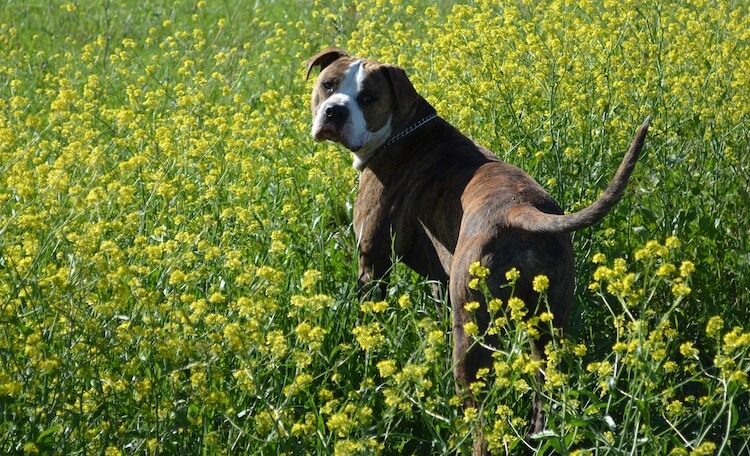
Once you’ve welcomed your Brindle Pit bull puppy into your home, it’s time to embark on a journey of training and bonding that will set the foundation for a harmonious relationship. Here are some essential puppy training tips tailored to this unique breed.
Pit bulls, including Brindle Pit bulls, are not inherently more prone to aggression or biting than other dogs. However, their strong jaws mean that any untoward behavior can result in more significant damage. Therefore, comprehensive training and socialization are crucial to ensure a well-adjusted and safe Pit Bull companion.
If you intend to have your Brindle Pit bull share space with children, it’s vital not only to teach your dog how to behave around youngsters but also to educate your kids on the appropriate way to interact with dogs. Begin by establishing boundaries early and instructing children on the correct way to pet the dog and engage in gentle play.
Despite their muscular appearance, Brindle Pit bulls are, at heart, soft-hearted canines. Traditional dominance-based training or physical corrections are not effective with this breed. Attempting such methods may lead to a power struggle with your Pit Bull, resulting in a lack of trust and cooperation.
Instead, opt for positive reinforcement and clicker training to stimulate your dog’s intellect and foster a cooperative spirit. With patience and consistency, Brindle Pit bulls can excel in obedience training, just like Moxie the Brindle Pit, who won the AKC Obedience Award in 2012, showcasing the potential for these dogs to become champion obedience companions.
Brindle Pitbull Common Health Issues
When caring for your Brindle Pit bull, it’s crucial to be aware of potential health issues that can affect this breed. Proper awareness and preventive measures can contribute to a long and healthy life for your furry companion.
Hip Dysplasia: An Ounce of Prevention
Brindle Pit Bulls, like many larger breeds, can be susceptible to hip dysplasia, a condition characterized by hip joint abnormalities leading to pain and an uneven gait. To minimize the risk, maintaining an appropriate exercise regimen and controlling your dog’s weight are essential. These practices help support healthy joint development and reduce the likelihood of hip dysplasia-related issues.
Parvovirus Susceptibility: Timely Vaccination
Young Pit Bulls, including Brindle Pit bull puppies, are vulnerable to Parvovirus, a highly contagious viral infection that can be life-threatening. Given that Pit Bulls may have relatively weaker immune systems compared to other breeds, it’s crucial to ensure timely vaccination. Consult your veterinarian to establish a vaccination schedule tailored to your dog’s specific needs, providing essential protection against this viral threat.
Cerebellar Abiotrophy: Genetic Awareness
Cerebellar Abiotrophy is a neurological condition that affects coordination, leading to symptoms like an unsteady gait and poor muscle control. It’s caused by a genetic mutation present in the Pit Bull gene pool. When considering a Brindle Pit bull, especially from a pedigree lineage, inquire about genetic testing for this condition. Responsible breeders should have such information readily available, as pedigree populations can exhibit higher levels of inbreeding, increasing the risk of genetic conditions.
Longevity and Care: The Path to 15 Years
With proper care, a Brindle Pit bull can enjoy a long and happy life. A balanced diet and regular exercise play pivotal roles in their well-being. Aim for a well-rounded diet that meets their nutritional needs, and ensure they receive ample physical activity to keep them in peak condition. On average, with attentive care, Brindle Pit bulls can expect to reach around 15 years of age, providing years of companionship and joy to your family.
By staying informed about these health considerations and taking proactive steps, you can contribute to a healthier and happier life for your Brindle Pit bull. Regular check-ups with a trusted veterinarian can also help detect and address any potential health issues early, ensuring a brighter future for your beloved canine companion.
FAQs About Brindle Pitbull
How long do Brindle Pitbulls typically live?
With proper care, Brindle Pitbulls can expect to live around 15 years. A balanced diet, regular exercise, and routine veterinary check-ups contribute to their longevity and ensure a fulfilling life as a loyal and loving companion.
Are Brindle Pitbulls aggressive by nature?
No, Brindle Pitbulls are not inherently aggressive. Like any dog breed, their behavior largely depends on upbringing, socialization, and training. These dogs are known for their loyalty and affection toward their families. Proper socialization and responsible ownership are crucial for fostering a well-behaved and balanced Brindle Pitbull.
Can Brindle Pitbulls coexist with other pets in the household?
Brindle Pitbulls can live harmoniously with other pets, including dogs and cats, given proper socialization and introductions. Early exposure to different animals and positive interactions can help them develop friendly relationships with their furry companions.
Are Brindle Pitbulls suitable for first-time dog owners?
Brindle Pitbulls can be a good choice for first-time dog owners, provided they are committed to training, socialization, and responsible ownership. Their loyalty and affection can make them loving family pets. However, it’s essential to invest time and effort in their upbringing to ensure a well-adjusted and obedient companion.
Are Brindle Pitbulls good with children?
Yes, Brindle Pitbulls are known for their affectionate and gentle nature, making them generally good companions for children. They often form strong bonds with their human family members, including kids. However, it’s crucial to supervise interactions between your Pit Bull and children, especially younger ones, to ensure safety and teach both the dog and children appropriate behavior around each other.
How can I teach my Brindle Pitbull to behave around children?
Teaching your Brindle Pitbull to behave around children involves consistent training, positive reinforcement, and supervised interactions. Establish clear boundaries and rules, and use reward-based methods to reinforce good behavior. Educate your children on how to approach and interact with the dog gently, ensuring that both the dog and children feel comfortable and safe.
Embrace the Loyalty and Love of Brindle Pitbulls
In conclusion, the Brindle Pit bull stands as a testament to loyalty and affection, ready to be your steadfast companion throughout life’s journey. These dogs seamlessly integrate into family households, relishing outdoor adventures followed by heartwarming moments on the couch. Their penchant for human attention and their stable temperament make them ideal family pets.
However, if you seek a larger and more independent canine companion, you might consider exploring the Pit Bull husky mix, the captivating pitsky. Additionally, for those inclined towards amateur obedience classes, the Brindle Pit bull could be your perfect partner for venturing into the ring of new challenges.
To ensure a happy and content Brindle Pit bull, prioritize ample exercise, mental stimulation, and engaging activities to keep them occupied while you’re away. If you have any lingering questions or thoughts about these wonderful dogs, don’t hesitate to share them with us in the comments below. Your journey with a Brindle Pit bull promises to be filled with loyalty, love, and cherished memories.


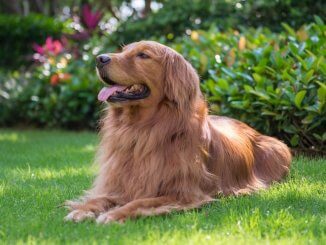
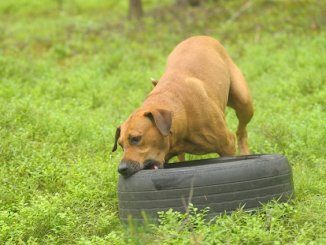
Great story John, thank you very much. Usually when you read about the pitbulls it’s a negative story so it’s good to see a positive article. I have a XL brindle Staffordshire and it is a great dog. I live in a fairly small town and people here knows him and thinks he’s great.
We rescued a brindle pitbull about a year ago. He is wonderful in the house with 4 kids and lots of activity. Going outside continues to be a problem. He reacts to everything from cars to squirrels and especially is very aggressive to other dogs. Any suggestions on how to make walking him a bit less stressful? Thanks
Hi Elyca,
What is your Pit’s history? Was he reactive when you first took him on? What did the shelter advise?
Firstly, it’s important to avoid those things that he finds stressful. So if it’s other dogs, walk places where you’re less likely to see other dogs or head out earlier in the morning or later at night. You want to keep his stress levels low. If this means a shorter walk initially, then work on some brain games at home to mentally stimulate him. Also choose one thing at a time to work on.
Here we work like a triage; choose the behaviour that poses the most risk. It’s possible to avoid squirrels and other dogs on a walk (or at least control him around them if necessary), yet cars could pose more danger.
You could argue that this would be beneficial to work on first. So you would look at keeping your distance and counter-conditioning very slowly. Help him make positive associations with cars, so from a distance, let him hear a car and reward. Repeat.
Providing he doesn’t react negatively, get closer, so the noise is louder. Again, providing he stays calm, move closer, he may see a car in the distance, reward a calm response.
You would use the same idea with everything he reacts negatively to.
However, this is a slow process and you must be patient.
Work on one thing at a time and keep his stress levels as low as possible. You mentioned you have a busy home, it could be beneficial to create a den or quiet place for your Pit so he can relax away. If you are concerned about his behaviour, please ask the advice of the shelter you got him from, or seek help from a qualified behaviorist.
Hey John,
My first brindle puppy is 9 weeks old. He is playful with my two chihuahuas, I hope she will good along with them when she get older. I’m nervous about this puppy when she get older and might attack my Chihuahuas?
Hi Ebbi,
Your puppy is young! You are already starting socialization.
Supervise their interactions whilst young as puppies can become a little irritating to older dogs as they haven’t yet learned the dog code of conduct!
In any multi-dog home it’s the owner’s responsibility to supervise the interactions between all dogs. If you are concerned about their behaviour, separate in crates when you are unable to fully supervise.
Dogs are incredibly adaptable and when raised with other pets in the home, they usually accept them as family. Keep their interactions positive; don’t let the puppy annoy the older dogs and stop play if it’s getting too boisterous (this applies to all puppies, irrespective of breed).
Allow your puppy to socialize with other dogs too but again monitor their interactions so they always have a positive experience. Read our body language guide to help you figure out if their interaction is anything to worry about!
I have 2 pit bull s and I had one since she was a pup than I got another one as a pup and my apple head Chihuahua AND the kitten get along all just fine I just have to say easy with the word baby kitten and they will chill out just Constance if u feel they playing to rough and I give my dog s thumb up with my kids. I couldn’t ask for better dogs they are 9 months and 5 months and 4 years old my apple head dogs the pit bulls are the younger ones and the cat is 6 mos